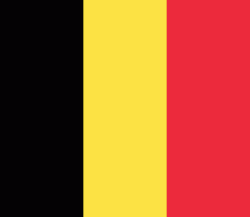Kraainem
 |
 |
Kraainem is a municipality with language facilities within Flanders, where the sole official language is Dutch. However, in 1963, special 'language facilities' were given to French-speaking inhabitants, when those were still a minority. They can request official documents from the local administration in French. Today, a majority of the inhabitants are French-speaking.
Kraainem is one of the most affluent municipalities in Belgium.
The forest of Stokkel belonged to the d'Huart family until the 1920s. When grandfather d'Huart died in 1927, his family decided to found "la Société Immobilière de Stockel" and built a lane through the forest. This lane is the current Albert d'Huartlaan that used to be covered with gravel until 1960.
The homes surrounding the "Hurlevent" were built and afterwards those of the society of Utrecht. The real construction started in 1930 and accelerated after the second world war. Approximately 2800 people lived in Kraainem in 1940, 3254 in 1945 and 5190 in 1954, which was the year in which urbanisation really experienced its surge.
In 1949 the social housing of Eigen Haard were built followed by the Josephine Charlotte neighbourhood in 1954. Over 11,000 persons lived in the Kraainem region in 1967. In 1993, of a total population of 12,780 residents, 2,623 were immigrants. Despite being located in Flanders, Kraainem became increasingly francophone during the 20th century, reducing the Dutch-speakers to a minority. Communal politics is centred upon the language issue. Given the commune's proximity and good transport links to the airport, to NATO and to the European Quarter, an increasing number of non-Belgians have settled in the municipality and this trend looks set to continue as the few remaining greenfield sites are developed.
The commune has two state schools, one Dutch and one francophone, and in 1968 the new St-Dominicus chapel was inaugurated.
Map - Kraainem
Map
Country - Belgium
 |
 |
| Flag of Belgium | |
Belgium is a sovereign state and a federal constitutional monarchy with a parliamentary system. Its institutional organization is complex and is structured on both regional and linguistic grounds. It is divided into three highly autonomous regions: the Flemish Region (Flanders) in the north, the Walloon Region (Wallonia) in the south, and the Brussels-Capital Region. Brussels is the smallest and most densely populated region, as well as the richest region in terms of GDP per capita. Belgium is also home to two main linguistic communities: the Flemish Community, which constitutes about 60 percent of the population, and the French Community, which constitutes about 40 percent of the population. A small German-speaking Community, numbering around one percent, exists in the East Cantons. The Brussels-Capital Region is officially bilingual in French and Dutch, although French is the dominant language.
Currency / Language
| ISO | Currency | Symbol | Significant figures |
|---|---|---|---|
| EUR | Euro | € | 2 |
| ISO | Language |
|---|---|
| NL | Dutch language |
| FR | French language |
| DE | German language |















